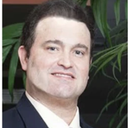Posted underBreast Fat Transfer q&a
Am I candidate for breast fat transfer if I have fibrocystic breast disease, very dense breast tissue, and had a benign lump?
I have fibrocystic breast disease. I had 1 suspicious lump biopsied but it was benign. I have extremely dense breast tissue. I know breast fat transfer may cause calcifications and cysts due to some of transferred fat dying, which can make breast cancer detection trickier. Since I already have fibrocystic, I wasn’t sure if that would cause further difficulty in breast cancer detection if I got a fat transfer. I was also concerned the fat transfer may cause more breast lumps. Don't want implants.
Answers (5)
From board-certified doctors and trusted medical professionals
More Breast Fat Transfer Questions
See all Breast Fat Transfer Q&AWE SEND PRETTY
EMAILS
What’s trending? Who’s turning heads? Which TikTok myths need busting? We’ve got you. No fluff, no gatekeeping—just real talk. Get our free, unfiltered newsletter.



